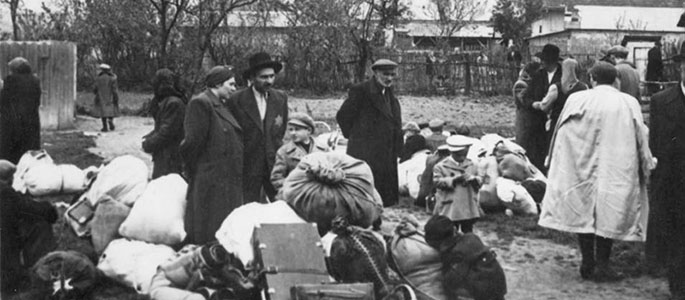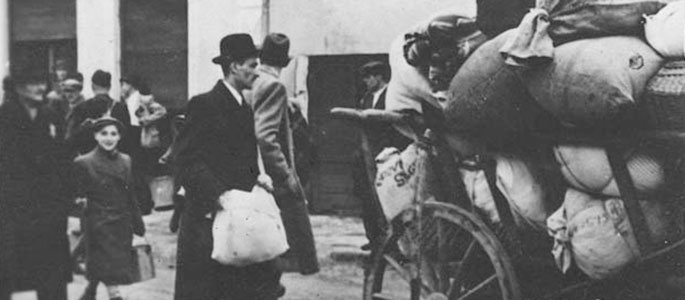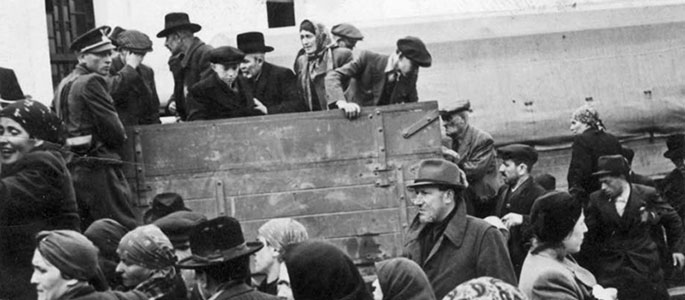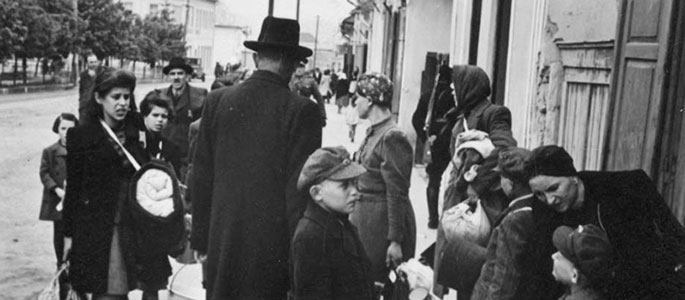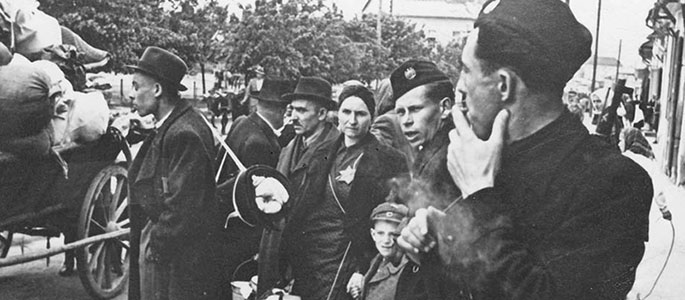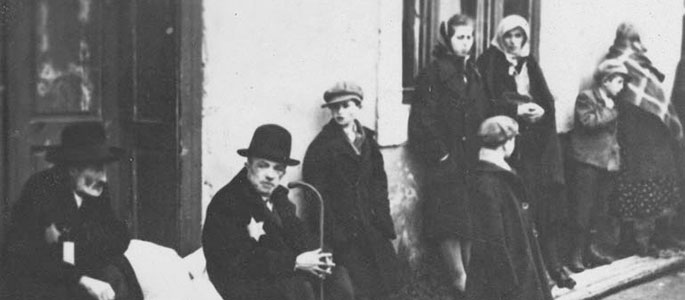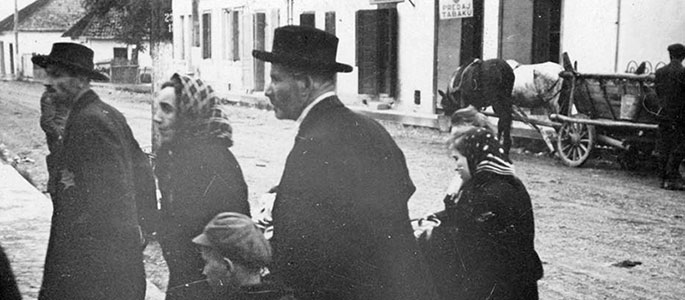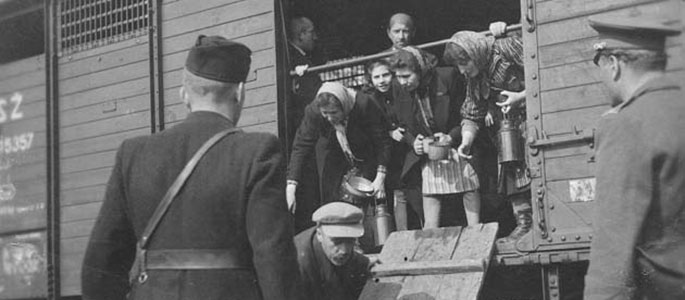Bratislava During the Holocaust
Deportations
At the beginning of 1942, just before the deportations of Jews from Slovakia to the death camps in Poland began, some 8,400 Jews remained in Bratislava. In March 1942, a hunt for Jewish youths was conducted. Hundreds of young men and boys were arrested and sent to the camp of Sered, from where they were deported to Majdanek. Some 380 young Jewish women from Bratislava and adjacent towns were sent to the temporary camp of Patronka, erected in an abandoned factory on the outskirts of Bratislava; the camp was, at this time, a holding place for hundreds of young women from western Slovakia who had been arrested. On the night of 28 March 1942, some 1,000 young women from the camp were marched to a remote railway station, crammed into freight cars and sent to Auschwitz. A few dozen escaped the deportation but were recaptured; they were deported to Auschwitz on the 2nd of April.
In April, Jewish families, primarily those living in the old Jewish quarter, were deported to Sered and from there to Auschwitz. From June until September 1942, another wave of deportations swept Bratislava, and some 2,000 Jews were deported from the transit camp of Patronka. Men who were fit to work were sent to eastern Poland and from there to Majdanek. The women and children were sent to the death camps of Sobibor and Belzec. Some 1,200 additional Jews from Bratislava and its environs were deported in a number of transports to the camp of Žilina, and from there to the Lublin area or to Auschwitz.
The first wave of deportations from Slovakia took place between 26 March and 29 October 1942. During that year, some two thirds of the Jews in Bratislava were sent to the death camps. At least 7,000 Slovakian Jews succeeded in escaping across the border to Hungary. After the deportations some 4,200 Jews remained in Bratislava. Not all of these Jews were originally residents of the city; some had been granted temporary ‘certificates of exemption’, while others survived in hiding.
In the second half of 1941, a group of Jewish public officials from a variety of different ideological affiliations had already begun to take shape. In time this group developed into the Bratislava Working Group. In the spring and summer of 1942 the group attempted to rescue Jews and to bring the deportations to a halt; to this end they tried to utilize the help of international Jewish organizations in the free world.
At the beginning of 1944 some 5,400 Jews remained in Bratislava and the surrounding region. When the Slovak National Uprising broke out on the 29th of August 1944, the Germans occupied Bratislava and immediately began to hunt down Jews and opponents of the regime. Only a small number of Jews found shelter in the villages or with local residents who helped them despite the threat of death which hung over whoever chose to help Jews. Some two thousand Jews from Bratislava – among them most of the activists in the Working Group as well as those rabbis who remained in the city – were apprehended by the Germans. On the 29th of September, 1944, they were transferred to Sered, and the next day 1,860 of them were deported to Auschwitz. This was the beginning of the second wave of deportations from Slovakia, in which a total of 12,306 Jews were deported to Auschwitz, Theresienstadt and camps in Germany.
Dozens of Jews from Bratislava fought against the Nazis as part of the Czechoslovakian Army and as partisans; many of them were wounded or fell in battle.Government of the Federal Republic of Germany

